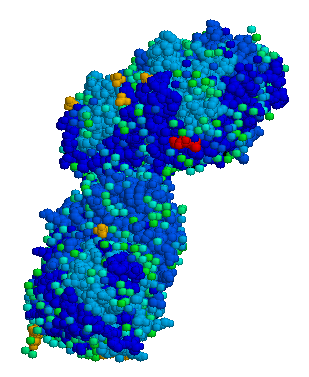Although typically considered a rare hereditary condition, Gaudier's disease is actually the most common of the glycolipid storage disorders. A genetic deficiency in the enzyme beta-glucosidase leads to the accumulation of the glycolipid glucocerebroside. Development of new screening tests has simplified its diagnosis. An improved understanding of the pathogenesis of the disease has greatly improved the quality of life of patients with Gaucher's disease. Beutler reviews the diagnosis and treatment of Gaucher's disease.
The disease has a frequency of about one case per 1,000 in the Ashkenazi Jewish population. Three types may occur: Type I the most common form, is characterized by sparing of the central nervous system from the primary effects of glycolipid accumulation. Type II, in contrast, is a rare but acute form leading to death in the first few years of life from central nervous system glycolipid accumulation. Patients with type III disease have a chronic course with late neurologic involvement.
Type I Gaucher's disease progresses in early childhood until age five or six. Commonly, children present with enlargement of the spleen and liver, with associated thrombocytopenia, anemia and leukopenia. Bone involvement, with pathologic fractures, recurrent pain and aseptic necrosis of the femoral head, is a troublesome complication. The diagnosis is made by detecting abnormal leukocyte beta-glucosidase activity or the mutations in DNA known to produce the disease. The DNA analysis, although recommended as a primary measure to diagnose the disease in Jewish patients, is considered much less reliable in non-Jewish patients.
The current treatment for Gaucher's disease includes enzyme replacement therapy with alglucerase, a prohibitively costly drug. Studies are under way to determine the most effective dosages. Recent data demonstrate that giving smaller doses three times weekly rather than a large dose every two weeks may be more cost-effective. Symptomatic management may include hip replacement in cases of aseptic necrosis of a femoral head and splenectomy in cases of thrombocytopenia.
The need for routine screening of the Jewish population for the carrier state, as in the case of Tay-Sachs disease, with prenatal counseling and diagnosis offered to couples when both are carriers, is under debate. The clinical course of Gaucher's disease is often benign and does not always produce the catastrophic problems of Tay-Sachs disease. (American Journal of Diseases of Children, November 1993, vol. 147, p. 1175.)
COPYRIGHT 1994 American Academy of Family Physicians
COPYRIGHT 2004 Gale Group



